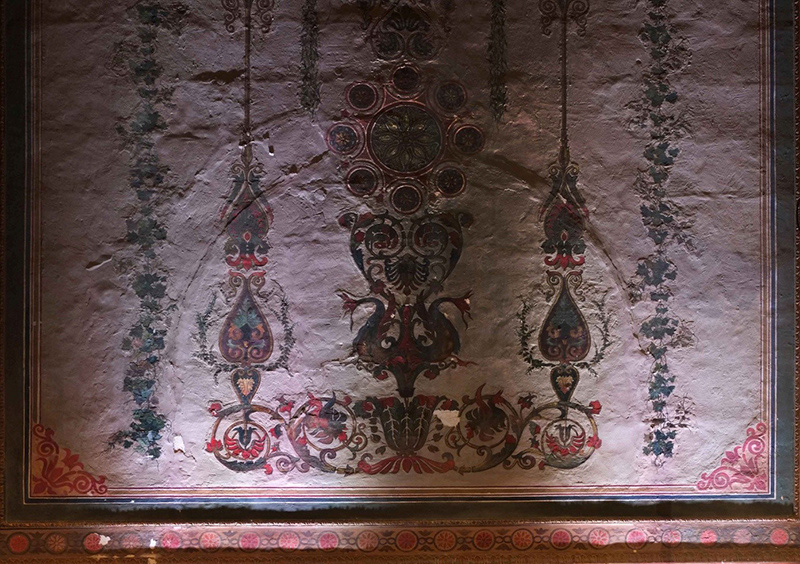
Whilst cleaning and repointing the detached infills between the painted limestone slabs of the Gran Salon within the National Museum of Archaeology in Valletta, an exciting discovery was made. The conservator-restorers observed that there seemed to be an underlying fresco on the side of the wall panel they were working on. Raking lights revealed the arch of a blocked-off niche below the 19th-century empire-style wall decoration. Once the alcove was exposed, what secrets would the auberge disclose?
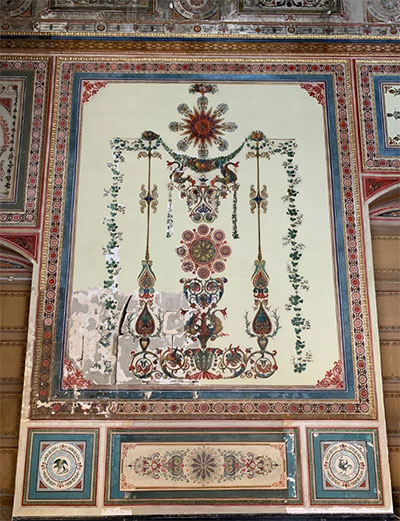
Four years ago, generously supported by the Bank of Valletta, Heritage Malta commenced work on the conservation and restoration of the sumptuously decorated Gran Salon. The Salon is located on the piano nobile of the Auberge de Provence which was built between 1571 and 1575. Featuring richly painted murals, exquisite arabesque cycles, a musicians’ gallery and a wooden beamed ceiling, the Gran Salon was used by the Provencal Knights of the Order of St John for their business discussions, as a refectory and also as a banqueting hall. In 1826 parts of the auberge were appropriated to serve as the premises of the Malta Union Club which is when the musician’s gallery, arabesques and Pompeiian inspired neo-classical wall decorations were commissioned. Today, apart from being a historic artefact in its own right, the Gran Salon also houses events and temporary exhibitions that enhance Malta’s cultural life.
Measuring a breath taking 8.5m in height, the ceiling boasts one of the only five wooden trussed roofs still surviving from the Knights’ period. In its 400 plus years of existence, the frescoes and timber roofing have suffered from different conservation issues, mainly from surface and structural decay, a process this conservation project seeks to address. To date, the conservators have restored and conserved practically half of the Gran Salon walls. A scientific analysis of the pigments on the current mural paintings has dated the earliest of them to 1824, painted during British colonial rule.
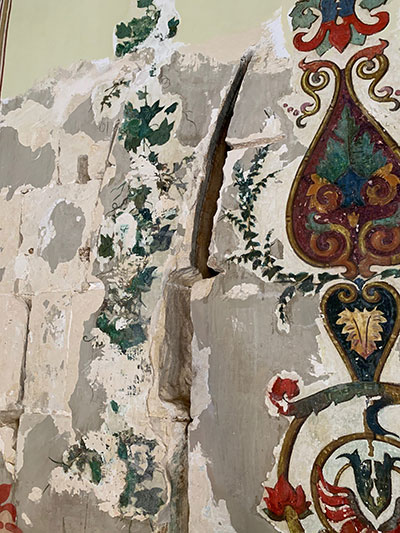
Historical research identified two fireplaces likely introduced in the 19th century within the north wall of the salon. However, when a small section of the blocked archway was removed with the minimum intervention possible, the conservators were surprised to find a completely different decorative scheme to the one in front. Featuring scalloped Baroque flourishes, the hidden frescoes are thought to date back to the period of the Knights of St John. The conservators set to work cleaning the layer of soot that covered the concealed mural. A hand began to emerge from the darkness, as did the three prongs of the trident the hand was clutching. Tridents are normally associated with Neptune, the ancient Roman god of freshwater and the sea, the counterpart of the Greek god Poseidon. Unfortunately, this assumption is mere conjecture at present as the rest of the painting is eclipsed behind the fireplace shaft and the rest of the arch, which has yet to be uncovered. A tentative hypothesis is that the alcove might have originally featured a lavabo. The Gran Salon was, after all, used as a dining room in the time of the knights, and Neptune would have been a likely mythological choice of subject to be painted on the wall, given his association with water.
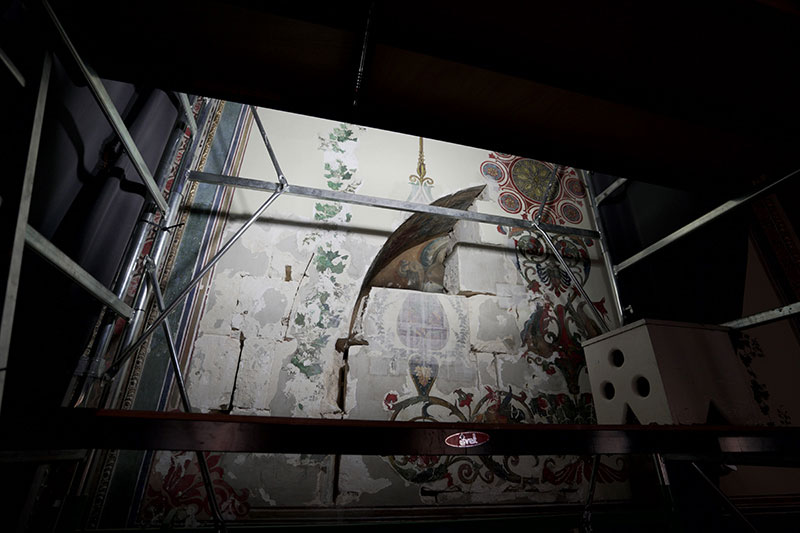
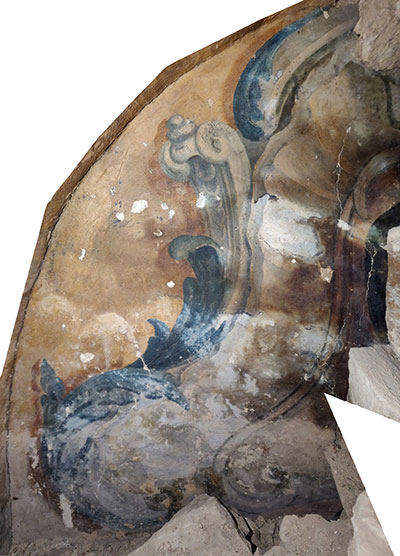
Once it has been determined whether it is structurally sound to continue with dismantling the arch, the identity of the mysterious figure in the alcove will be disclosed. In the meantime, Japanese Paper helps preserve the 19th-century frescoes on those blocks which have been removed to expose the buried niche, helping to keep the paintings in place.
Sharon Sultana, Senior Curator of the National Museum of Archaeology says that the uncovered mural, to date, is the only surviving element that has the potential to reveal information about the decorative scheme of the Gran Salon, preceding the early 19th-century redecoration of this ceremonial space.
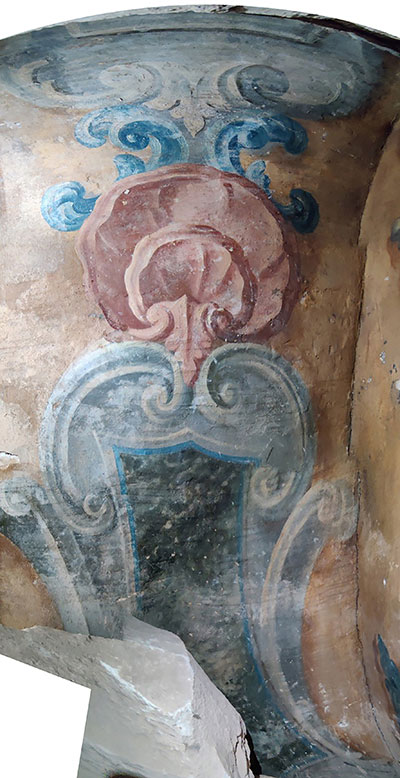
Heritage Malta CEO, Mr. Noel Zammit is excited about what further research and excavations may yield, “This is the start of a new journey into the restoration of this impressive ceremonial space. We look forward to opening up this magnificent space to the public once restoration is complete, hopefully with other discoveries and surprises that we will encounter along this journey,” he said.
With the Bank of Valletta’s continued assistance, Heritage Malta will be undertaking an interdisciplinary investigation to better assess and research the discovery of this early decorative scheme rescued from the obscurity of time.



